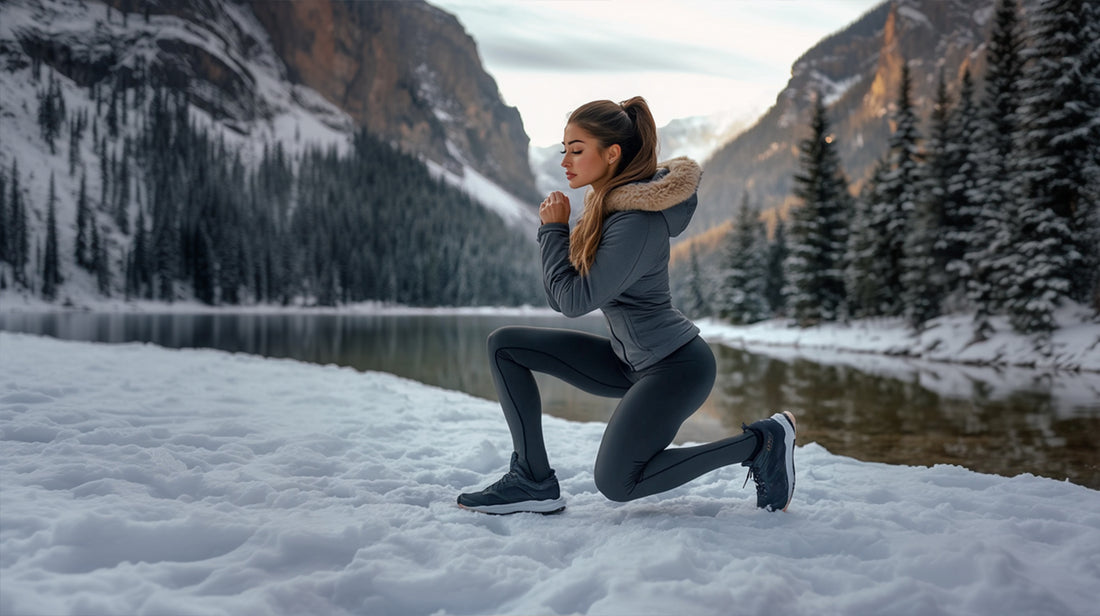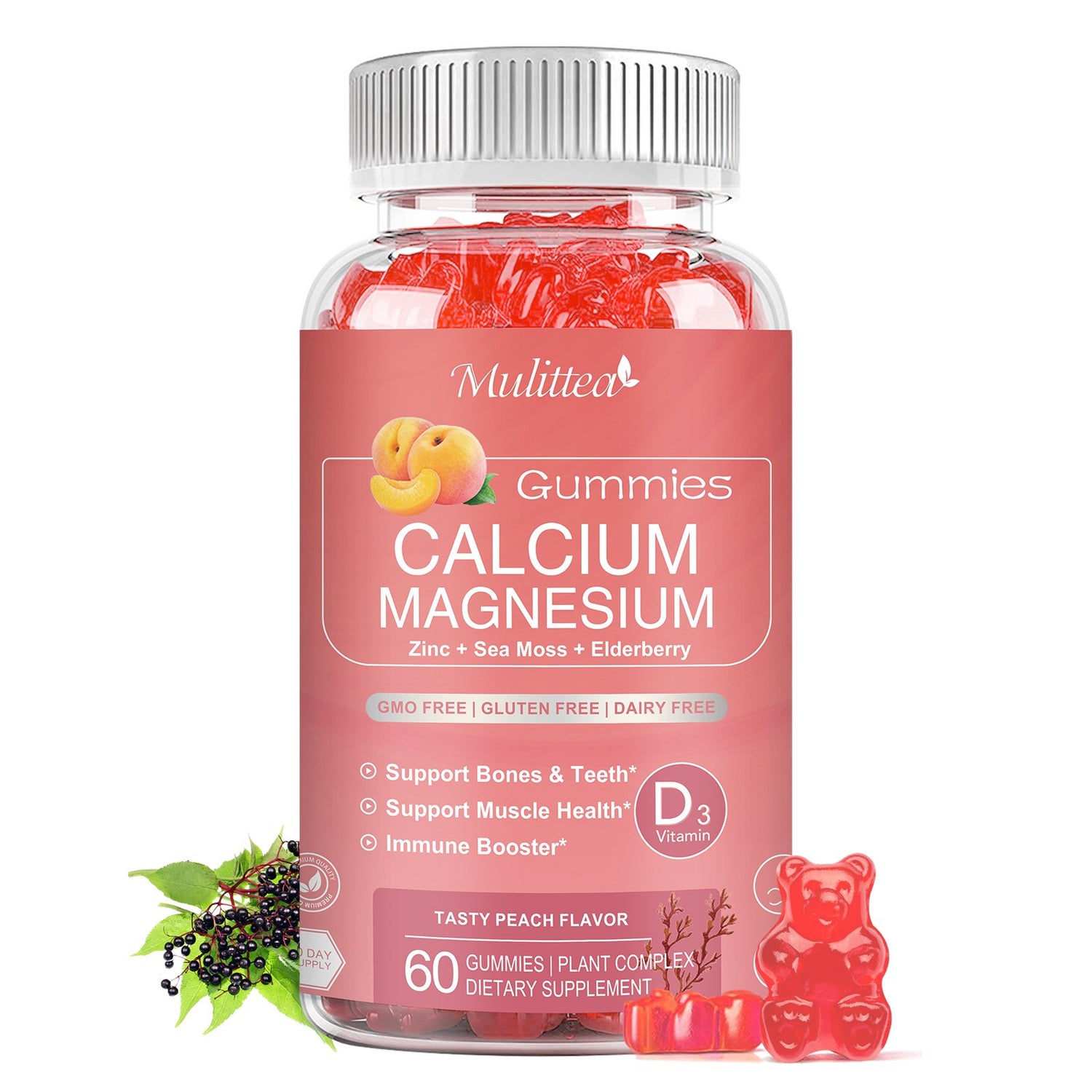
Winter Fitness: Protect Your Bones & Joints
Share
As the winter months settle in, the cold temperatures and shorter days bring about a host of challenges—especially when it comes to staying fit and active. The icy conditions and freezing temperatures can make outdoor exercises more hazardous, while the lack of sunlight can impact your bone health. This combination of factors puts additional stress on your bones and joints, making it even more important to prioritize their protection and care.
Whether you're an avid skier, a dedicated runner, or someone who simply enjoys walking outdoors, protecting your bones and joints during winter should be a top priority. At Mulittea, a comprehensive bone care brand, we understand the vital role bone and joint health plays in maintaining mobility, especially in colder weather. This article will explore the specific risks winter poses to your bones and joints and offer actionable tips to ensure you're staying active, safe, and healthy all season long.
Why Winter Poses Challenges for Bones & Joints
Winter brings a unique set of challenges to the body, particularly when it comes to bone and joint health. The cold weather can increase muscle stiffness and reduce joint flexibility, making it harder to stay mobile. People are also at a higher risk of slipping on icy surfaces or overexerting themselves during physical activity, which can result in falls, sprains, and fractures.
Cold Weather and Joint Stiffness
Cold weather causes muscles and joints to contract, making them less flexible. This is particularly noticeable in the knees, hips, and shoulders, where arthritis and joint pain can worsen during winter months. The drop in temperature often leads to tighter muscles and tendons, which in turn limits the range of motion and increases the risk of injury during physical activity.
Additionally, during colder months, the synovial fluid, which helps lubricate your joints, can thicken, making movement feel more restricted. This can exacerbate discomfort in people with existing joint conditions like osteoarthritis.
Increased Risk of Injury
Winter’s icy conditions present an increased risk of slipping and falling, which can lead to broken bones, sprained ankles, and other injuries. Even if you're careful, the presence of snow or ice on outdoor surfaces makes it difficult to avoid potential hazards.
Moreover, outdoor activities like skiing, snowboarding, and ice skating can place added stress on your joints and bones. Without proper warm-up and protective measures, these activities can lead to strains and injuries.
Reduced Sunlight and Vitamin D Deficiency
In winter, the shorter days and overcast skies often result in reduced exposure to sunlight, which is crucial for the production of Vitamin D. This vitamin is essential for calcium absorption and bone health. Without sufficient Vitamin D, bones can become brittle and more prone to fractures. For many people, this lack of sunlight can lead to a deficiency, especially in regions that experience long winters.
The Importance of Bone & Joint Health During Winter
Maintaining strong bones and healthy joints during the winter months is critical for preventing injuries and ensuring mobility. With bones and joints directly affecting your ability to move and stay active, taking steps to protect them can improve your overall health and quality of life.
Prevention of Injuries
Having strong bones and flexible joints significantly reduces the risk of injuries like fractures, sprains, or strains. With proper bone density and joint lubrication, the body can better withstand the stress of winter activities, from shoveling snow to navigating icy sidewalks. This is particularly important for older adults, who may be more susceptible to falls and fractures due to reduced bone density.
Improved Mobility and Flexibility
Winter fitness isn't just about preventing injuries; it's also about ensuring your bones and joints remain strong and functional. Maintaining flexibility and mobility allows you to perform everyday activities like walking, bending, or carrying groceries without discomfort. By focusing on bone and joint health during winter, you can avoid stiffness, chronic pain, and loss of mobility.
Reducing Joint Pain from Arthritis
For people who suffer from arthritis or other joint conditions, winter can bring about a flare-up in symptoms. The colder temperatures exacerbate joint stiffness and inflammation. Prioritizing joint health can help manage these symptoms and ensure that winter doesn't hinder your daily activities.
Essential Nutrients for Bone & Joint Health in Winter
To support strong bones and healthy joints, it's essential to consume the right nutrients. In winter, when the body is under additional stress due to the cold, certain vitamins and minerals become even more critical. Here are the key nutrients that support bone and joint health:
Calcium
Calcium is the most well-known nutrient for bone health. It plays a crucial role in building and maintaining strong bones throughout life. The body stores calcium in the bones, and when bone density decreases, the risk of fractures increases. Consuming calcium-rich foods like dairy products, leafy greens, and fortified plant-based milks can help maintain bone strength. Supplementation may be necessary for those who don’t get enough calcium from their diet.
Magnesium
Magnesium works in tandem with calcium to support bone density and muscle function. Magnesium also plays a role in regulating calcium levels in the bones. This mineral helps to prevent bone loss and promotes overall bone health. Foods rich in magnesium include nuts, seeds, whole grains, and leafy greens.
Vitamin D
Vitamin D helps the body absorb calcium and phosphorus from the food you eat, which are essential for bone health. In winter, the reduced sunlight can lead to lower vitamin D levels, making supplementation even more important. Vitamin D-rich foods include fatty fish, egg yolks, and fortified dairy products. Spending some time outdoors, even in winter, can also help boost vitamin D levels.
Collagen and Glucosamine
Collagen and glucosamine are vital for joint health. Collagen, the protein that makes up cartilage, helps maintain the elasticity and strength of joints. Glucosamine helps repair cartilage and can provide relief from joint pain and inflammation. These nutrients are especially beneficial for those who engage in high-impact activities like running or skiing.

Tips for Protecting Your Bones & Joints During Winter
Now that you understand the importance of bone and joint health in winter, here are some practical tips for keeping your bones and joints safe and strong throughout the season.
Warm-Up Before Exercise
Winter can make muscles and joints stiffer, so warming up before exercise is crucial. Take extra time to perform dynamic stretches and gentle movements to get the blood flowing to your muscles and joints. This will help improve flexibility and reduce the risk of injury.
Gentle, Low-Impact Exercise
While the winter months may tempt you to stay inside, regular exercise is still essential for maintaining bone health. Opt for low-impact activities like swimming, cycling, or walking, which can be easier on your joints and help maintain flexibility. Yoga and Pilates are also excellent choices for building strength, increasing flexibility, and relieving joint stiffness.
Layer Up and Stay Warm
Keeping your body warm during winter activities is essential to avoid muscle and joint stiffness. Wear layers of clothing to trap body heat and protect your joints from the cold. Warm muscles are more flexible, and you’ll be less prone to injury.
Stretching and Flexibility
Incorporate stretching into your daily routine to maintain joint mobility and flexibility. Focus on gentle stretches for your legs, hips, and shoulders, which are particularly vulnerable to stiffness in cold weather.
Stay Hydrated
Even in winter, hydration is crucial for joint health. Drinking water helps keep the synovial fluid in your joints lubricated, making movement smoother and less painful. Dehydration can lead to joint discomfort and stiffness, so make sure to drink plenty of water throughout the day.
Conclusion
Winter fitness comes with its challenges, but with the right approach, you can protect your bones and joints and stay active all season long. Focus on warming up before exercise, maintaining flexibility, and nourishing your body with essential nutrients like calcium, magnesium, and vitamin D. With Mulittea’s supplements and these practical tips, you can support your bone and joint health, ensuring that winter doesn’t slow you down.
This winter, prioritize your bone and joint health. Stronger bones and healthier joints lead to a more active, mobile lifestyle. Let Mulittea help you achieve that goal!
References
- “Bone Health and Osteoporosis: A Guide for Consumers.” National Institutes of Health, U.S. Department of Health and Human Services, https://www.niams.nih.gov/health-topics/bone-health-and-osteoporosis.
- “Arthritis and Cold Weather.” The Arthritis Foundation, https://www.arthritis.org/health-wellness/about-arthritis/understanding-arthritis/arthritis-and-cold-weather.
- “Vitamin D and Bone Health.” National Institute of Arthritis and Musculoskeletal and Skin Diseases, U.S. Department of Health and Human Services, https://www.niams.nih.gov/health-topics/vitamin-d.

